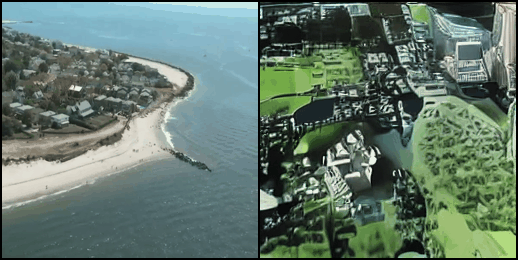A team of researchers has usedartificial intelligence(AI ) to redo videos by using uninterrupted functional Magnetic Resonance Imaging ( fMRI ) information of participants ' brains .
publish their determination , which are yet to be peer - reviewed , on pre - print server arXiv , the research worker used data taken from volunteers who had watched television of varied remark – including animals , humans , and born scenery – while undergoing brain scans .
" The chore of recreating human vision from mentality transcription , especially using non - trespassing prick like operable Magnetic Resonance Imaging ( fMRI ) , is an exciting but difficult task , " the team , from the National University of Singapore and The Chinese University of Hong Kong , write in their study . " Non - trespassing method , while less intrusive , fascinate limited information , susceptible to various interferences like noise . "

The system scored well in terms of semantics.Image credit: Zijiao Chen, Jiaxin Qing, Juan Helen Zhou/https://mind-video.com/
One challenge for recreating video ( or moving ) stimulation ( i.e. what someone keep an eye on while stimulate their encephalon scanned ) is that functional magnetic resonance imaging machines capture snap of brain natural action every few seconds . sorry :
" Each fMRI scan essentially represent an ' norm ' of brain activity during the snapshot . In contrast , a typical video has about 30 frames per second ( FPS ) . If an fMRI frame takes 2 second , during that meter , 60 video recording physique - potentially containing various objects , motions , and scene changes - are presented as visual stimuli . Thus , decoding functional magnetic resonance imaging and recovering picture at an FPS much high than the functional magnetic resonance imaging ’s worldly resolution is a complex task . "
They trained the AI – which they call MinD - Video – to decode the fMRI data and pull off the icon - generating AI framework Stable Diffusion to recreate the stimulation as picture . The videos were then assessed in term of semantics ( whether the AI understood the input was a cat , or a run human being etc ) and fit dynamics , or how shut the visual reconstruction looked at the pixel - level .

AI recreation on the right.Image credit: Zijiao Chen, Jiaxin Qing, Juan Helen Zhou/https://mind-video.com/
The team report that their system was 85 percent precise in full term of semantics , outperform the previous well - performing AI exemplar by 45 percent .
" Basic objects , animals , persons , and scene type can be well recovered [ from wit scan data ] , " the team lend . " More importantly , the movement , such as running game , dancing , and singing , and the scene dynamics , such as the close - up of a person , the immobile - motion scenes , and the long - dig scene of a city sight , can also be reconstruct correctly " .
The investigator , who published more example on their websiteMind - picture , hope that the oeuvre has hope in train genius - computer port , though they strain rule is necessary to protect mass ’s biological data " and avoid any malicious usage of this engineering science " .
The report is publish on pre - print serverarXiv .